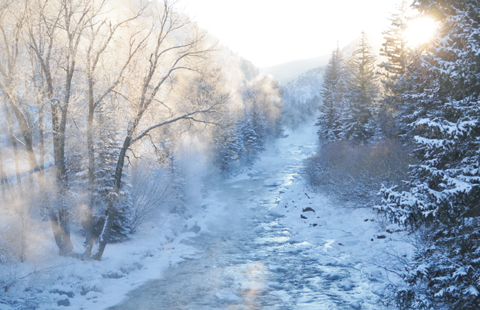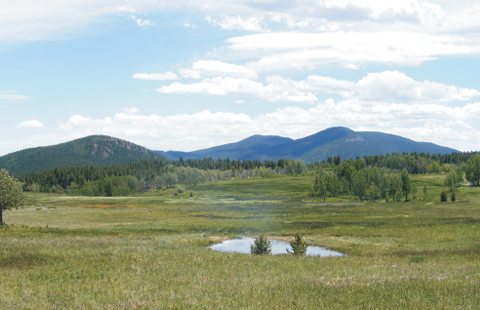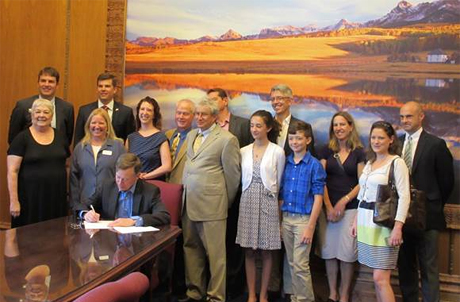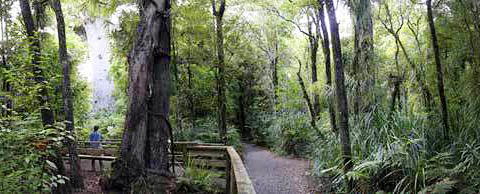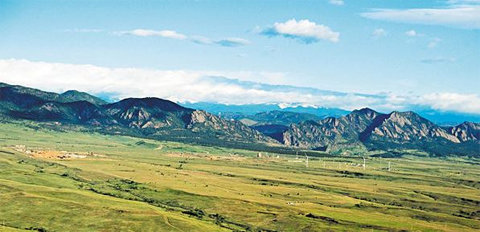Meadow to Mountain: Mountain Area Land Trust
by Vicky Gits
Mountain Area Land Trust’s first success was helping to preserve Elk Meadow Open Space Park near Evergreen, one of the most visible and most loved scenic parks in the foothills area.
|
Mountain Area Land Trust Location: Evergreen Year founded: 1992 Executive director: Jeanne Beaudry Conservation easements in Jefferson County: 47 Acres preserved in Jefferson County: 7,567 Total conservation easements: 68 Total acres in conservation easements: 14,707 |
Still a viable elk grazing area today, 23 years ago, the land previously known as Noble Meadow was on track to become a high-end housing development.
Under a cooperative land-purchase agreement, the developer/owner Hiwan Ridge Development donated the 281-acre conservation easement to MALT; Jefferson County Open Space purchased 117 acres, Evergreen Park and Recreation District purchased 10 acres for athletic fields and the community raised $200,000 toward the purchase price of $2.28 million.
Six counties
Based in Evergreen, MALT is active in the mountain areas of Boulder and Jefferson counties, as well as Clear Creek, Park, Gilpin and Teller counties.
It currently has about a dozen active conservation efforts in progress, said executive director Jeanne Beaudry, who joined the organization in January 2009.
In its focus area of Jefferson County, MALT holds 47 conservation easements over 7,567 acres. In total MALT has conserved 14,707 acres in 68 private conservation easements and one fee-held property from 1992 through December 2014 in six counties.
Saving the aspens
Exemplifying its spirit of stewardship, in 2014 MALT spearheaded a project that fenced off a dying grove of aspen saplings on one of its large properties in Clear Creek County. Known as a desirable bird habitat, the trees were being overgrazed by mule deer and elk. MALT provides long-term monitoring as well.
High-altitude research
This summer MALT is partnering with Volunteers for Outdoor Colorado and others to design and build a one-mile loop trail at Pennsylvania Mountain Natural Area. The site has been used for scientific research for more than 37 years.
Beaudry said preserving an area on Pennsylvania Mountain was one of her most memorable and significant efforts to date. “Pennsylvania Mountain Natural Area is so biologically significant. It encompasses research, 1,800-year-old bristlecones and recreation.”
“There are only two other high-altitude research areas where they study climate change and effects on trees, animals and pollinators. It was private property and slated to be sold for building large homes.”
MALT purchased 92 acres of the 500-acre site in 2014 as part of a multiphase project.
Nationally accredited
MALT earned national accreditation from the Land Trust Accreditation Commission of the Land Trust Alliance in September 2012. Achieving national accreditation is a documentation process requiring years of effort and means a group meets the highest professional standards.
MALT was certified by the Colorado Conservation Easement Oversight Commission in March 2010, as required by state law.
A few of MALT’s successes are:
North Fork of the South Platte River near Bailey, 71 acres, 2015. Conservation easement on scenic property formerly used as a retreat owned by a bicycling club in the early 1900s. Preserves half mile of river frontage.
The Nicholas Family Mountain, 50 acres, 2014, Bailey, near the Mount Evans Wilderness. Includes several rustic cabins from the early 1900s and mountaintop views. Family-owned for three generations, it was the family’s dream to see it conserved forever.
Bristlecone view Horizon and Bristlecone View Horizon South Park County ranch near Fairplay, 1,400 acres, 2011. Visible from both U.S.285 and Highway 9, this large conservation easement by a single owner preserves views on the way to mountain resorts in Summit County.
Long Meadow Ranch, Park County, 240 acres, 2013 Historic ranch on U.S. 285 on the North Fork of the South Platte River.
Public-private projects in Jefferson County, (partially owned and managed by other public entities):
Elk Meadow Open Space
Beaver Brook Watershed
Bergen Nature Trail
Blair Ranch
Owen property Upper Bear Creek
Conservation easements in Jefferson County include the following:
Chatfield Turkey Farm, 43 acres, Jefferson County, 2013. Historically part of a turkey farm. Today provides habitat for big-game including elk, mule deer, black bear, turkey and mountain lion.
Roller-Roller estate, 57 acres, 2013, near Conifer and U.S. 285, the Roller-Roller estate is adjacent to the James Q. Newton Park on the south. Current and proposed use is outdoor recreation and outdoor education. Access will be provided through outdoor and conservation classes.
Upper Bear Creek near Evergreen, 2013, 70 acres. Habitat for mountain lion, black bear, turkey, mule deer and more. Preserves scenic enjoyment along upper Bear Creek Road.
Mission statement: “Our mission is to save scenic vistas, natural areas, wildlife habitat, water resources, working ranches and historic lands for the benefit of the community and as a legacy for future generations.”
MALT Preservations:

Elk Meadow. Photo by Linda Besler (April 2015)

Columbines. Photo by Allan Casey (July 16, 2015)

